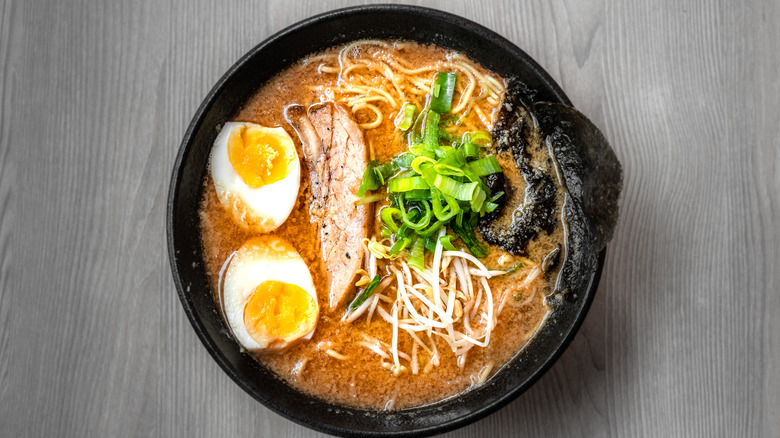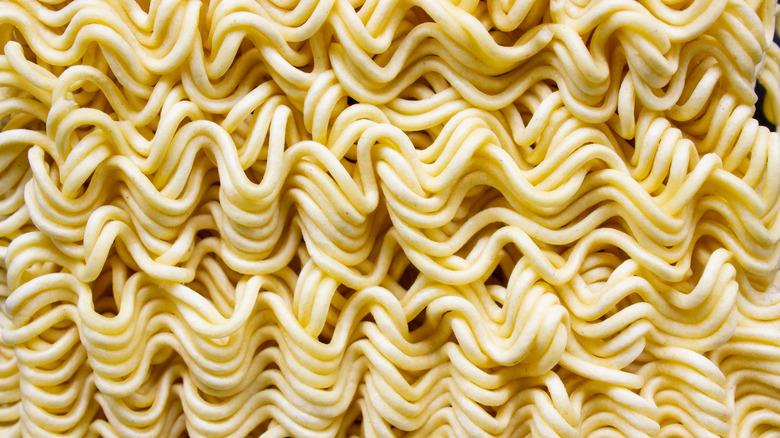The Ingredient Traditional Ramen Recipes Never Use
On a cold night, there is nothing better than a bowl of warm soup. And on some cold nights, there's nothing better than a bowl of traditional Japanese ramen. Sure, if you say the word "ramen" in a room full of people, you're bound to have a few people think you're referring to the Instant Lunch or Cup Noodles variety, but the fact is authentic ramen and instant ramen aren't even close to the same.
If you sit down for a bowl or ramen at a noodle bar or ramen restaurant, odds are you're miles away from a package of instant noodles, and if you are served instant noodles, get out of there and find yourself another ramen place. All jokes aside, when you look at the history of ramen you will find that the recipe was never made with an instant noodle (per The Japanese Way) and that's because instant noodles weren't invented until the late 1950s by Momofuku Ando who founded Nissin. Traditional Japanese ramen has been around a lot longer. So, how else does instant ramen differ from real ramen?
You'll never find instant noodles in real ramen
According to The Japanese Way, to call instant ramen noodles ramen isn't actually culturally accurate. Ramen cuisine is related to hand-pulled wheat noodles, served with rich pork and chicken broth, chopped scallions, and barbecued pork. Not only that but there are different varieties of ramen depending on what region of Japan you're in and each of them differs in style and preparation. Spoiler alert: You'll simply never find dehydrated instant noodles in a traditional Japanese ramen dish.
Instant ramen noodles are basically one kind of dehydrated noodle with particular flavor options added, which is very different from the lengthy preparation that traditional ramen requires. Hand-pulled ramen noodles are used to create ramen dishes, but dehydrated instant noodles aren't suddenly considered ramen if you add them to hot water. Serious Eats also notes that traditional ramen is much more pressing of an issue than instant ramen noodles. Traditional ramen is meant to be eaten as soon as it hits the table. The noodles are made fresh, and ramen purists say they should be eaten no more than five minutes after entering the hot broth. So slurp away, friends!

